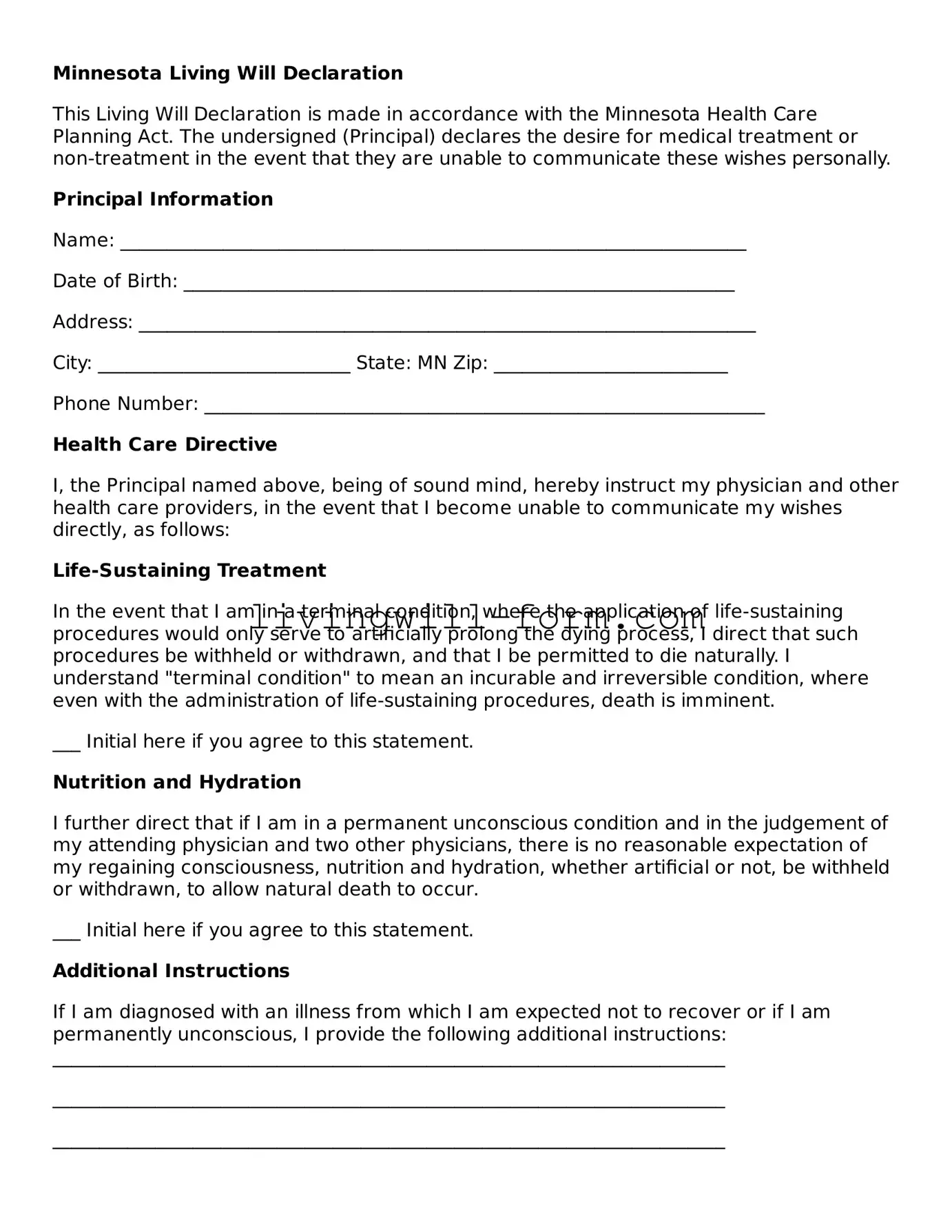Minnesota Living Will Declaration
This Living Will Declaration is made in accordance with the Minnesota Health Care Planning Act. The undersigned (Principal) declares the desire for medical treatment or non-treatment in the event that they are unable to communicate these wishes personally.
Principal Information
Name: ___________________________________________________________________
Date of Birth: ___________________________________________________________
Address: __________________________________________________________________
City: ___________________________ State: MN Zip: _________________________
Phone Number: ____________________________________________________________
Health Care Directive
I, the Principal named above, being of sound mind, hereby instruct my physician and other health care providers, in the event that I become unable to communicate my wishes directly, as follows:
Life-Sustaining Treatment
In the event that I am in a terminal condition, where the application of life-sustaining procedures would only serve to artificially prolong the dying process, I direct that such procedures be withheld or withdrawn, and that I be permitted to die naturally. I understand "terminal condition" to mean an incurable and irreversible condition, where even with the administration of life-sustaining procedures, death is imminent.
___ Initial here if you agree to this statement.
Nutrition and Hydration
I further direct that if I am in a permanent unconscious condition and in the judgement of my attending physician and two other physicians, there is no reasonable expectation of my regaining consciousness, nutrition and hydration, whether artificial or not, be withheld or withdrawn, to allow natural death to occur.
___ Initial here if you agree to this statement.
Additional Instructions
If I am diagnosed with an illness from which I am expected not to recover or if I am permanently unconscious, I provide the following additional instructions: ________________________________________________________________________
________________________________________________________________________
________________________________________________________________________
Primary Health Care Agent
If I am unable to make health care decisions for myself, I designate the following person as my primary health care agent:
Name: ___________________________________________________________________
Relationship: ____________________________________________________________
Address: __________________________________________________________________
Phone Number: ____________________________________________________________
Alternate Health Care Agent
If my primary agent is unwilling, unable, or unavailable to act as my health care agent, I designate the following person as my alternate health care agent:
Name: ___________________________________________________________________
Relationship: _____________________________________________________________
Address: __________________________________________________________________
Phone Number: ____________________________________________________________
Signature
I understand the full import of this declaration, and I am emotionally and mentally competent to make this declaration. Further, I understand that this document will remain in effect until I revoke it.
Date: ___________________________
Signature: _________________________
Address: __________________________________________________________________
Witness Declaration
I declare that the person who signed this document is personally known to me and appears to be of sound mind and under no duress, fraud, or undue influence. I am not the person appointed as agent by this document.
Name: ___________________________________________________________________
Signature: ___________________________________________________________ Date: ____________________
Address: __________________________________________________________________
